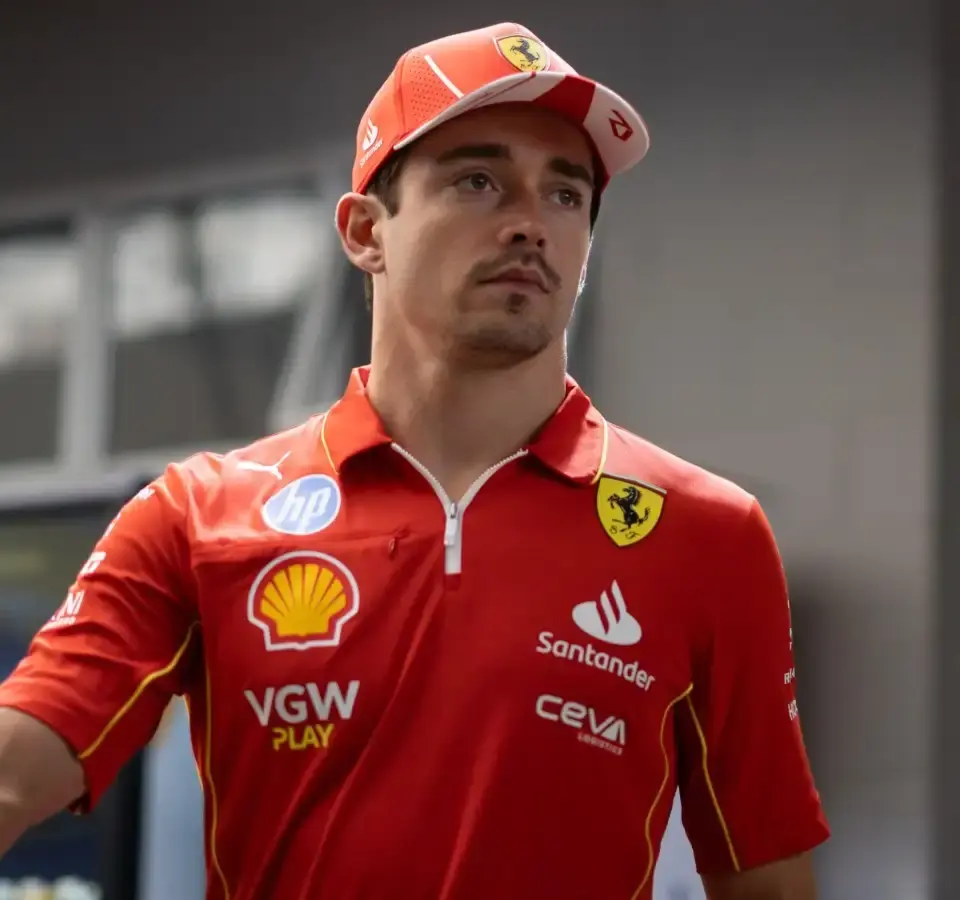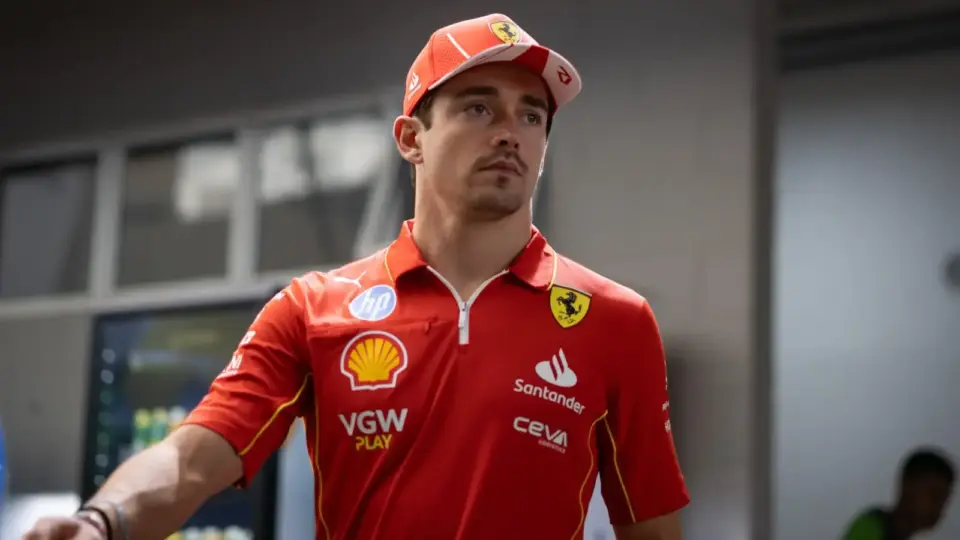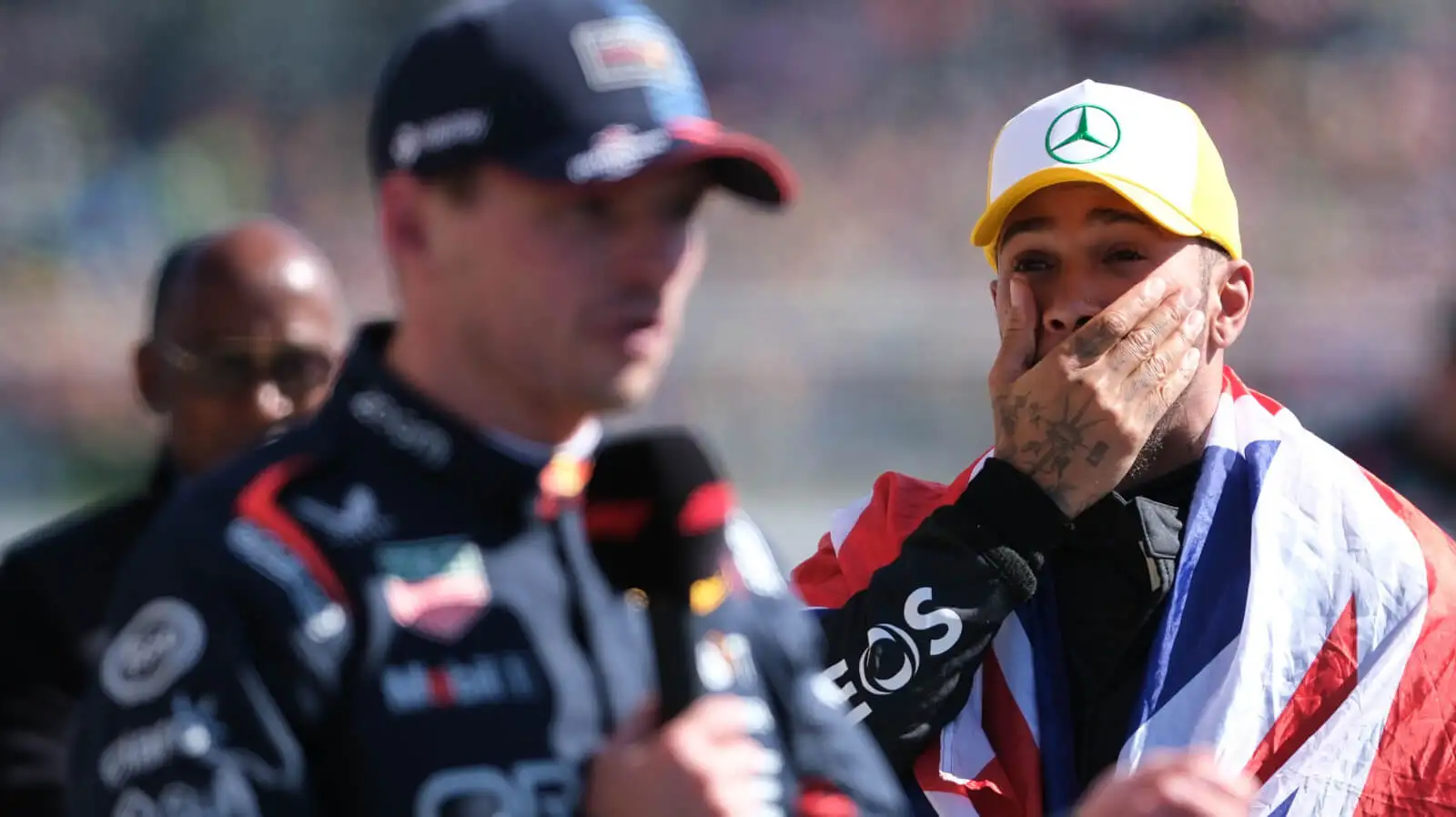It was a race filled with promise, yet it quickly turned into a battle for survival for Charles Leclerc at the Bahrain Grand Prix. Starting from second, hopes were high for a podium finish. However, those hopes were dashed as Leclerc found himself quickly overtaken by competitors.
Despite starting strong, Leclerc could not maintain his early momentum. As the laps progressed, it was clear that Ferrari’s pace wasn’t sufficient to keep ahead of rivals. In a race where strategy played a huge role, Leclerc found his options limited by the car’s performance.
A Disappointing Start
Leclerc’s troubles began right at the opening lap when he unexpectedly lost his position to George Russell. The setback was compounded as he defended fiercely from the charging Lando Norris. Starting second should have been an advantage, but Ferrari’s lack of speed put Leclerc on the back foot from the get-go.
His optimism after a relatively successful qualifying session was quickly dampened as the first few laps unfolded. The Ferrari seemed to strain under the pressure of maintaining its pace, leading to immediate concerns about strategy and tire management.
Struggles with Race Strategy
Leclerc’s attempt to stick to a strategic race plan faced hurdles as he fell behind in pace against his competitors. With Lando Norris incurring a five-second penalty for a false start, Leclerc briefly saw a chance to regain position, but ultimately, it wasn’t enough.
As the race progressed and the stakes heightened, it became evident that Ferrari’s current setup couldn’t keep up with rivals. Leclerc was forced to concentrate on defensive maneuvers rather than pushing forward, a telltale sign of the struggles Ferrari faced.
Addressing the media, Leclerc stated, “We can put it in different ways. We pushed a little bit in the first stint and the second stint was faster, but just because of degradation.” He highlighted the challenges they faced as they tried to find a competitive pace.
Handling the Pressure
Leclerc found himself in a difficult position as the race wore on, trying to manage tire wear and performance amidst relentless competition. The failed attempts to push forward revealed underlying issues with the car’s capability.
The safety car’s unfortunate timing only added to the difficulties. Leclerc and his team had strategies in place, but the slow pace and tire degradation hindered their success. Despite the challenges, Leclerc maintained composure, “We were just struggling for pace just like at the beginning of the race, compared to the others.”
Ferrari’s struggle to maintain their placement highlighted the ongoing difficulties in finding the right balance between speed and tire management. The team continued to wrestle with complex decisions, keenly aware of the heightened pressure from rivals.
Leclerc’s Realizations
Reflecting on the race’s outcome, Leclerc identified pace as a critical factor limiting their potential. His attempt to close the gap with George Russell was hindered by overheating tires and insufficient pace.
“We could have pushed him to go in, which would have been great, but we didn’t manage to,” Leclerc admitted, showing awareness of the limitations. Where other drivers managed to eke out advantages, Ferrari seemed continually a step behind.
Despite the setbacks, Leclerc assessed the choices they made critically, understanding that even with different strategies, the outcome might not have changed significantly without improved pace.
Analyzing Competitors’ Performance
Comparing Ferrari’s performance to their competitors offered little comfort to Leclerc. Rivals like McLaren and Mercedes had a more robust pace and were better positioned to handle the race’s demands.
Leclerc acknowledged that even without the safety car interference, Ferrari wasn’t equipped to challenge effectively. The car’s limitations became particularly evident in the heat of competitive action, as rivals capitalized on every small advantage.
The impressive performance of Russell and Norris highlighted areas where Ferrari must improve. Leclerc and his team have much to consider as they analyze data and reflect on race strategies.
Looking Ahead
As the team looks towards future races, improving their pace is a key priority. Leclerc’s insights and race feedback will be crucial as they work to close the gap with leading teams.
Understanding that incremental improvements won’t suffice, Ferrari needs to identify fundamental changes to enhance their car’s performance. “When you look at George, he obviously managed to make those soft lasts until the end. I don’t think that this was a possibility for us,” Leclerc noted.
The focus now shifts to identifying areas for growth, leveraging race data to influence strategic decisions. The current pace issues underscore the need for innovation and enhanced engineering solutions.
Reflections on Team Dynamics
Leclerc’s race underscores the importance of teamwork and strategic planning within the Ferrari camp. Coordinating smoothly under pressure is paramount, yet the recent race illuminated existing gaps.
Despite their challenges, the team shows resilience by addressing performance critiques openly. Their readiness to reflect and adapt is key to navigating the ongoing season’s challenges.
As Ferrari works towards bridging the performance gap with competitors, collaboration between drivers and engineering teams will be vital. The lessons from Bahrain will inform their future strategies and movements forward.
Listening to the Critics
The voices of critics won’t be silenced easily as Leclerc and his team face persistent scrutiny. Yet, these criticisms offer valuable insights into the broader F1 landscape.
Leclerc embraces these evaluations with a desire for improvement. Constructive feedback provides Ferrari with perspectives that are essential for forward-thinking strategies and technological advancements.
In this high-stakes environment, the ability to pivot and adapt in response to feedback will be central to Ferrari’s ability to reclaim their competitive edge. The narrative may be challenging, but it’s a necessary ingredient in their growth journey.
Conclusion: A Path Forward
The race in Bahrain served as a stark reminder of the challenges Ferrari faces. Leclerc’s insights underline a journey of growth and adaptation.
Recognizing their position relative to rivals, Ferrari is committed to rigorous evaluations and making necessary adjustments. The Bahrain race will serve as a learning experience as they aim to rise to the occasion in upcoming challenges.
The Bahrain Grand Prix highlighted Ferrari’s need to improve and adapt amidst fierce competition. For Leclerc, it’s about learning from setbacks and striving for enhanced performance.
While the path ahead is challenging, the opportunity for growth is in their grasp. With careful adjustments and strategic development, Ferrari aims to reclaim its standing in future races.










